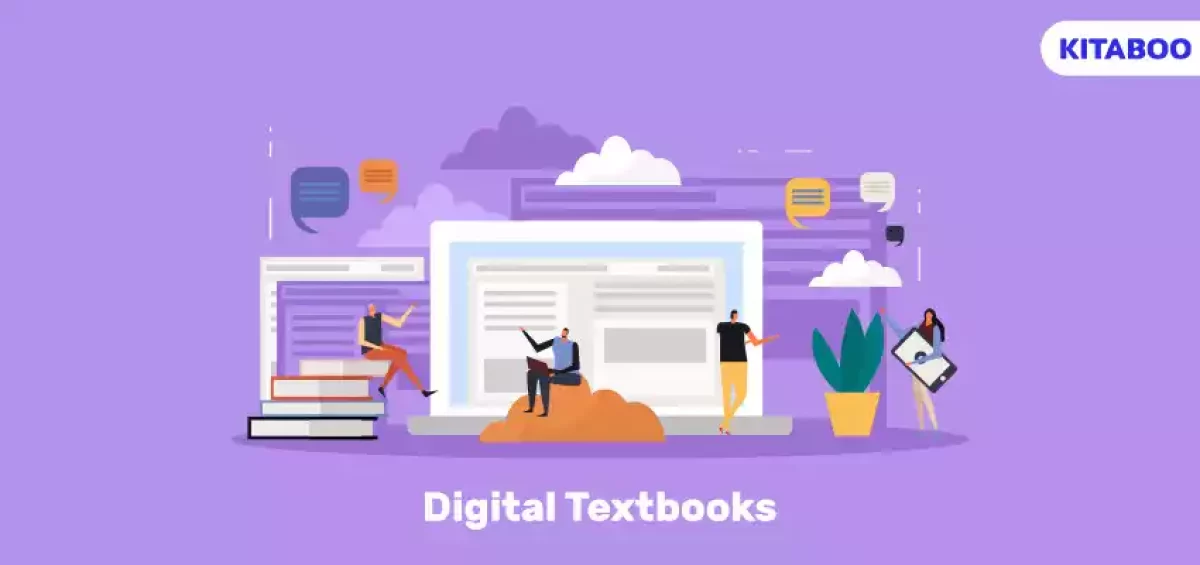The shift from traditional to digital media has provided students with a lower-cost and more convenient alternative to print textbooks. Digital textbooks allow students to access their course material at a moment’s notice, all from their preferred devices, such as smartphones, tablets, and laptops.
Although this advancement has been a groundbreaking solution to help students cope with the inconvenience of having to deal with traditional textbooks, the creation of digital textbooks with interactive features provides new ways of engaging with content.
In this blog, we will explore how the implementation of interactive features allows authors and publishers to create more engaging digital textbooks.
Table of Contents
I. The Potential of Interactive eBooks
II. The Benefits of Interactive eBooks
- Better Student Engagement
- Personalized Learning
- Active Participation
- Widened Accessibility
- Feedback and Assessment
- Reduced Costs and Improved Sustainability
III. Creating Interactive eBooks
- Choose the Proper Tools and Platforms
- Plan Out All Interactive Elements
- Integrate Different Types of Interactivity
- Optimize Content for Distribution
IV. Conclusion
The Potential of Interactive eBooks
Interactive eBooks combine the convenience of digital reading with the interactivity of multimedia-rich content to provide a dynamic and immersive learning experience.
Interactive eBooks implement a range of interactive features to enhance learning outcomes. These include:
1. Multimedia Elements
Interactive eBooks integrate multimedia elements such as videos, audio clips, and animations directly into the text to provide students with a multi-sensory learning experience.
2. Collaborative Tools
Some interactive eBooks incorporate collaborative tools that enable students to collaborate with peers, teachers, and experts, encouraging the development of collaborative learning environments. They offer interactivity and engagement that traditional textbooks cannot match, making them an invaluable tool for teaching and learning.
The Benefits of Interactive eBooks
Interactive eBooks provide a range of benefits that improve the overall classroom learning experience for students and educators. These can include several of the following:
1. Better Student Engagement
Interactive eBooks engross students by implementing dynamic content and interactive features that create a more enjoyable learning experience.
By incorporating elements such as videos, animations, and interactive simulations, digital textbooks transform a passive activity, such as reading, into an active experience. Interacting with the learning material in meaningful ways encourages students to explore the material fully, helping improve their knowledge retention and comprehension.
Digital textbook platforms such as KITABOO allow publishers to facilitate the creation, publishing, and distribution of immersive content filled with multimedia and interactive elements.
2. Personalized Learning
Interactive eBooks allow students to adapt their learning path to suit their individual preferences.
Customizable features such as audio narration options, adjustable font sizes, and built-in dictionaries allow interactive eBooks to accommodate different learning styles and abilities. Students can explore topics at a more natural pace, revise challenging concepts, and explore more topics in depth.
3. Active Participation
Interactive eBooks promote active participation and critical thinking among students by prompting them to interact with the content, solve problems, and engage in interactive exercises. These kinds of interactive elements provide hands-on learning and real-time feedback.
Interactivity features such as quizzes, virtual labs, or collaborating with fellow students on projects allow students to become actively involved in the learning process. Digital textbook platforms like KITABOO offer a smooth interface for the production and sharing of interactive, customizable eBooks.
4. Widened Accessibility
Interactive eBooks improve accessibility and inclusivity with features such as audio narration, text-to-speech technology, and screen reader compatibility. Students with visual or auditory impairments can access learning material more effectively.
Interactive eBooks also eliminate the burden of carrying around physical textbooks, allowing students to access learning materials using their tablets, laptops, and smartphones.
5. Feedback and Assessments
Interactive eBooks enable real-time assessment and feedback through embedded analytics and assessment tools. This allows teachers to track student performance, refine their teaching approaches to meet individual learning requirements, and offer extra support.
The implementation of interactive features such as quizzes and interactive exercises allows educators to gauge student learning and provide timely feedback.
6. Reduced Costs and Improved Sustainability
Interactive eBooks provide a cost-effective and sustainable alternative to printed textbooks, eliminating the need for physical production and distribution. They help mitigate the environmental impact associated with paper-based learning materials.
Digital textbooks can be easily updated and revised to reflect the latest advancements and curriculum changes instead of having to release new editions each year to keep up with new and evolving information.
Creating Interactive eBooks
The following tips will help you with digital textbook creation where you can add interactive elements effectively:
1. Choose the Proper Tools and Platforms
Choose the most appropriate tools to enable interactive eBook creation. Consider user-friendly platforms that provide a wide range of features and customization options. Digital textbook platforms such as KITABOO provide a seamless interface for the creation and distribution of personalized and interactive eBooks.
2. Plan Out All Interactive Elements
Take some time to carefully plan the interactive elements you want to integrate before moving straight into the content creation process. Proper planning will help you consider your eBook’s goals, your audience’s preferences, and how the interactive features you add will enhance the reading experience.
3. Integrate Different Types of Interactivity
After carefully considering your preferred interactive mediums and choosing the most appropriate tools for implementing them, integrate a large variety of interactive elements into your eBook. Adding different multimedia elements, quizzes, or widgets will make your eBook more palatable for the largest possible audience, helping enhance engagement.
4. Optimize Content for Distribution
Make sure that your interactive eBooks work well with most of the popular e-readers and smartphone platforms. After all, these devices are where the majority of people tend to consume digital media. Ensure the best experience possible on these devices to leave your readers wanting more.
Make use of social media, email newsletters, and online marketplaces to promote your eBook effectively and spread the word about its unique selling points.
Conclusion
Interactive eBooks provide students with a dynamic and immersive learning experience. By harnessing the power of multimedia and interactivity, interactive digital textbooks make learning more accessible, engaging, and effective for learners of all ages and backgrounds. As we continue to innovate and evolve in the digital age, interactive eBooks will undoubtedly play a central role in shaping the future of education.
Digital textbook platforms like KITABOO offer educators and publishers a seamless and easy-to-use platform to create, publish, distribute, and market interactive eBooks. Multimedia elements and interactive activities such as quizzes allow educators to truly make the most of their curriculum and enrich the learning experience.
To know more, connect with us now!
Discover How An Ebook Conversion, Publishing & Distribution Platform Can Help You
Kitaboo is a cloud-based content platform to create-publish & securely distribute interactive mobile-ready ebooks.
You May Also Like








